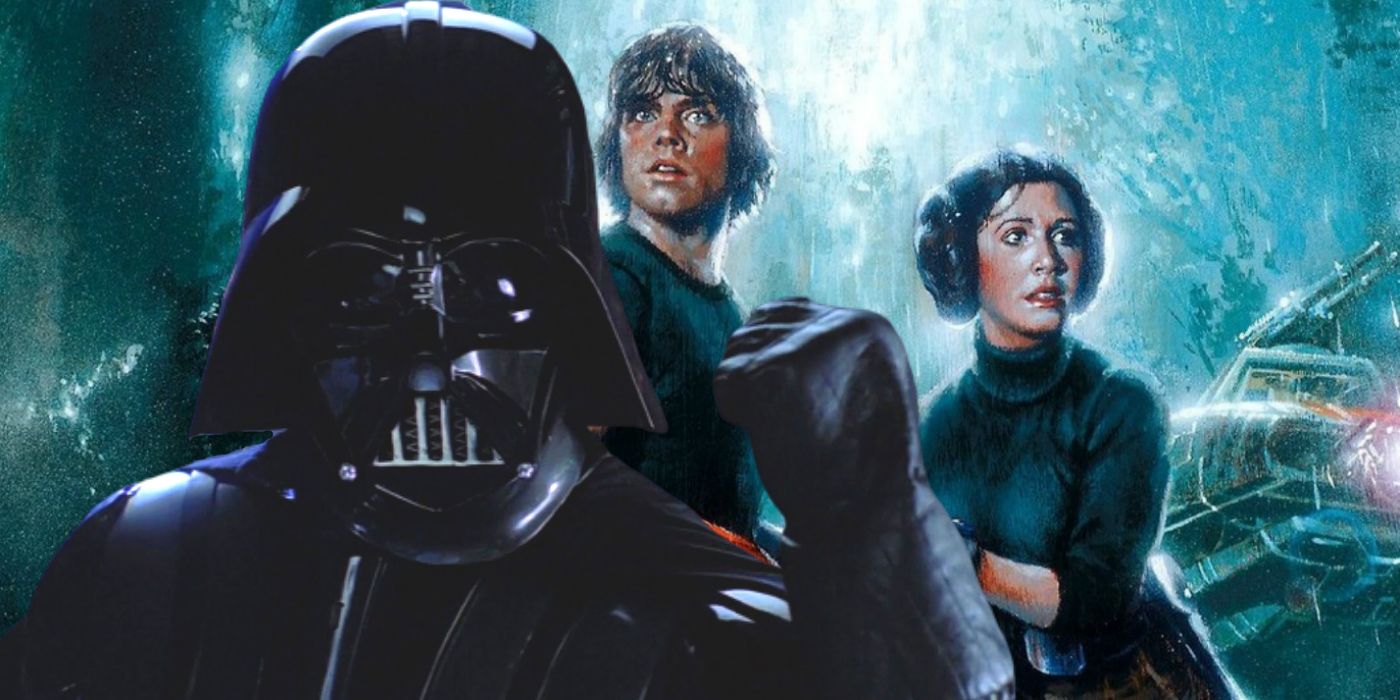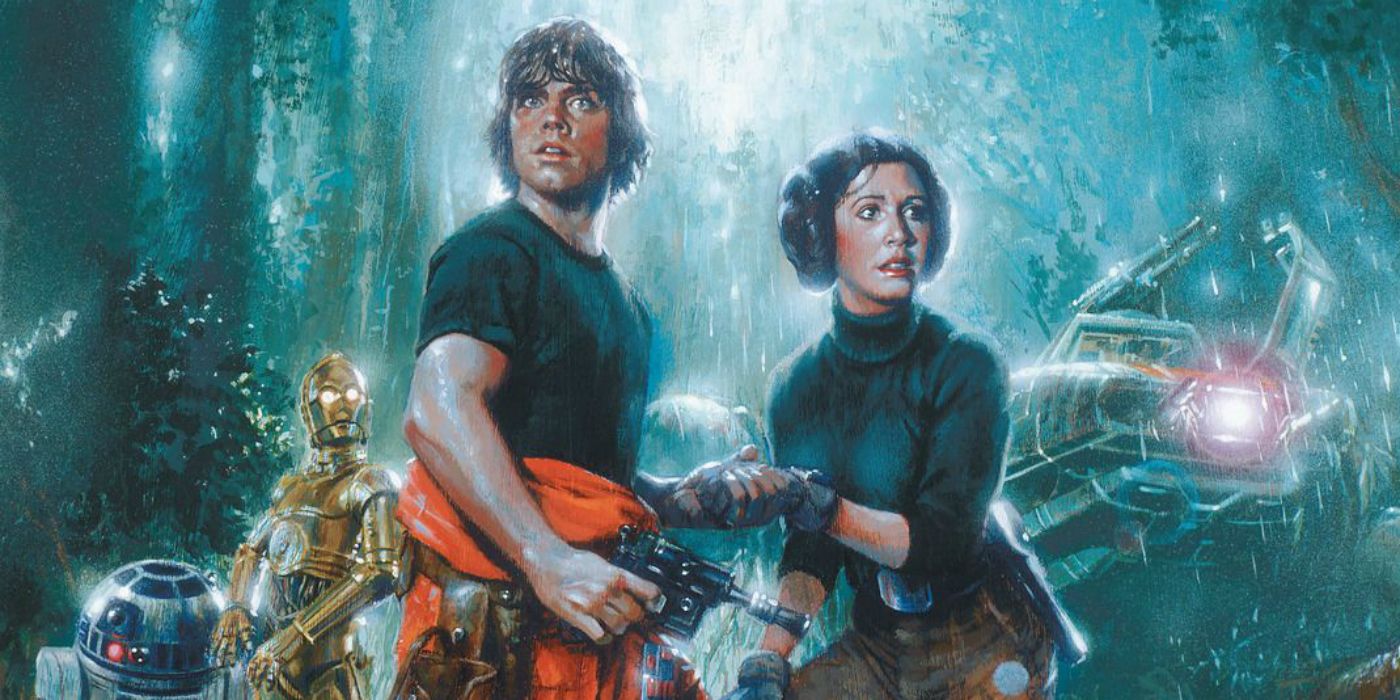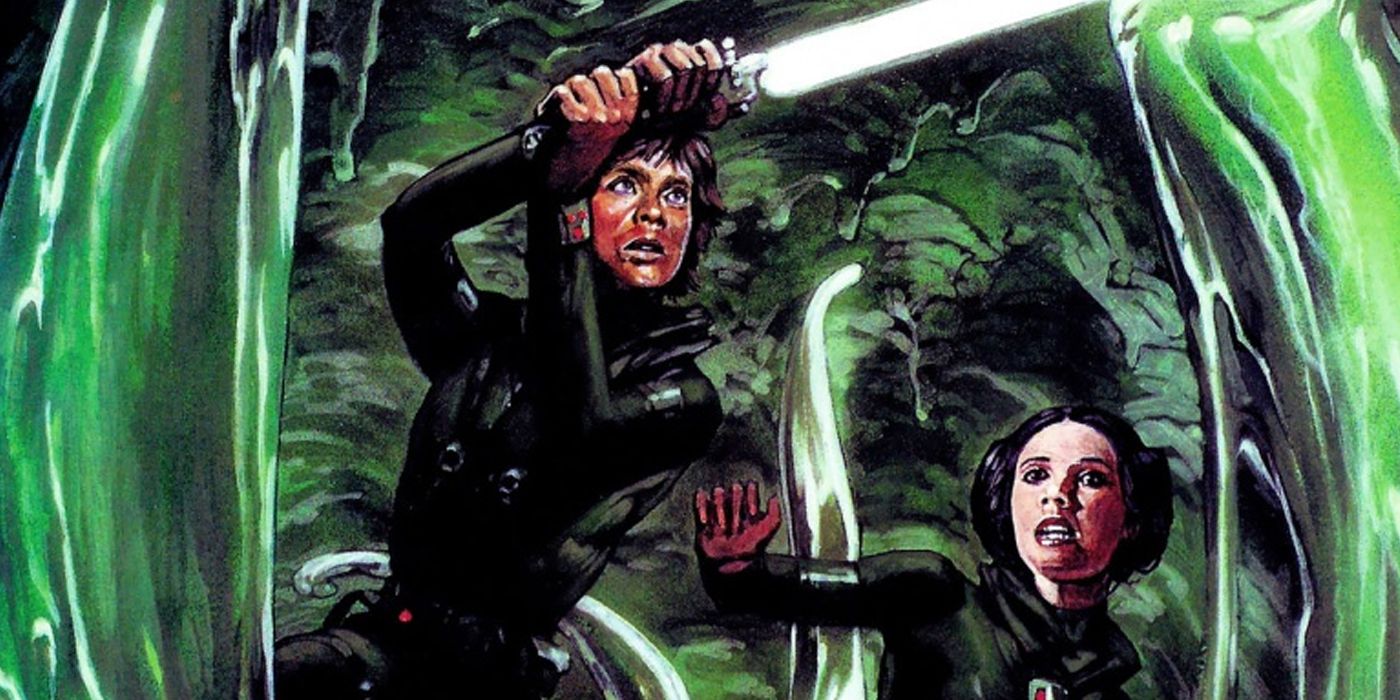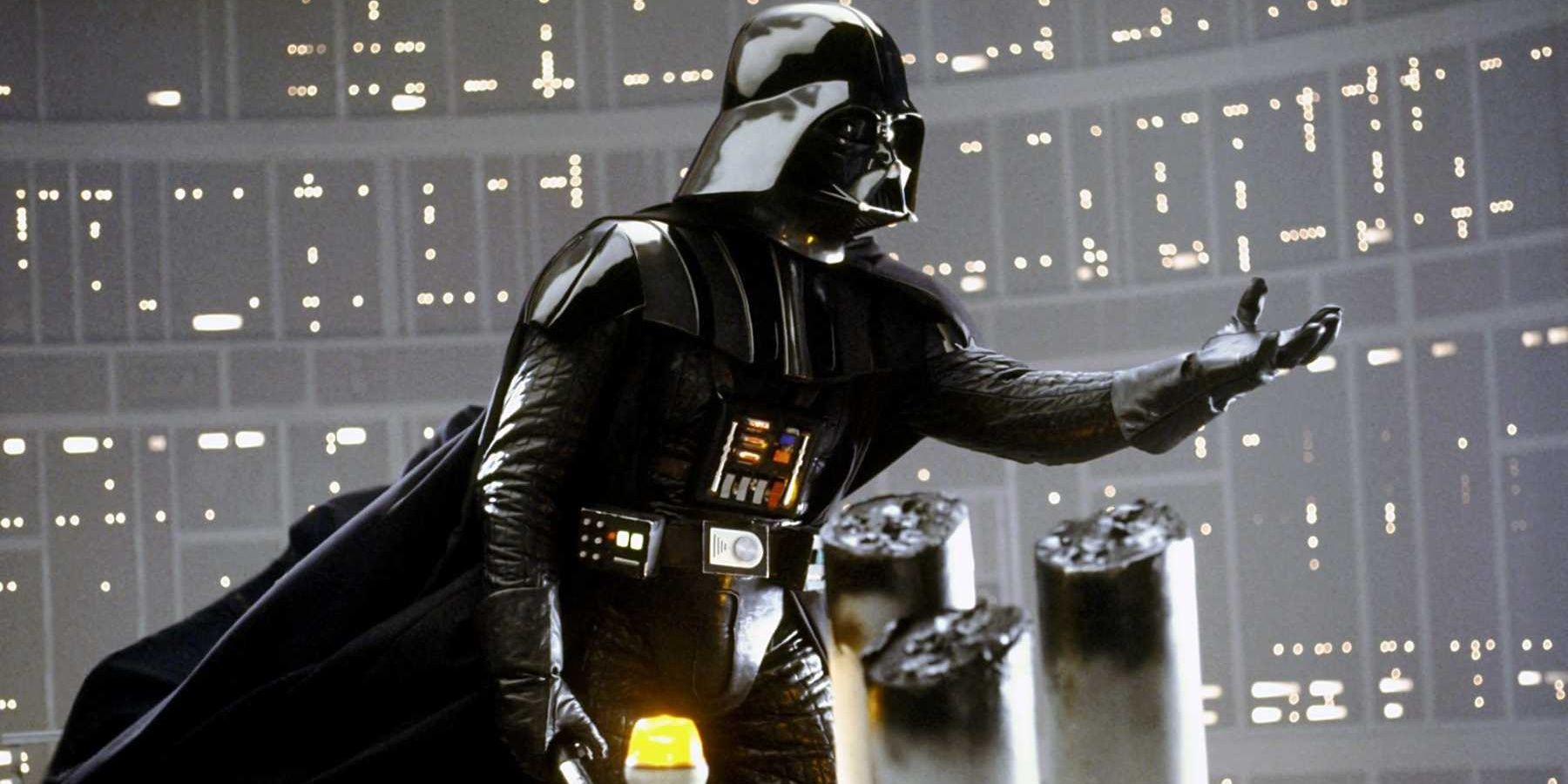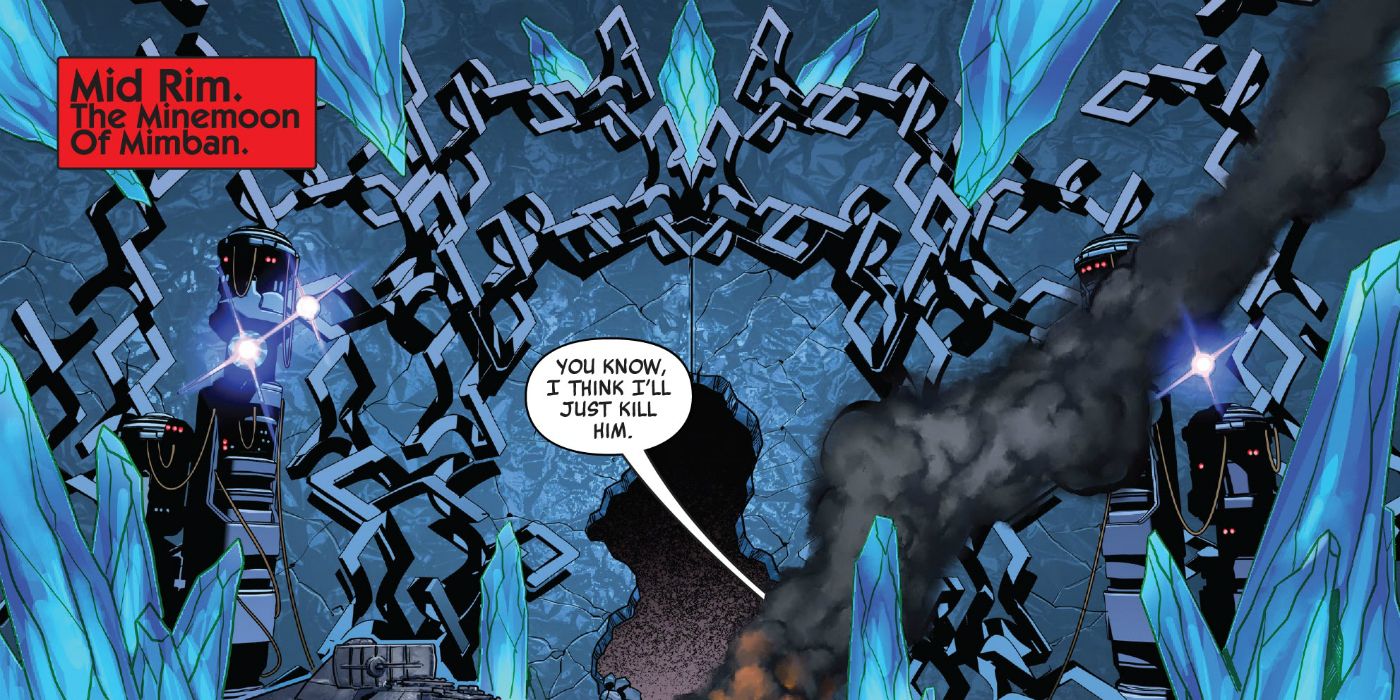Splinter of the Mind's Eye, the original Star Wars sequel planned instead of The Empire Strikes Back, would have been the end of the franchise. With the benefit of hindsight, 1977 - the year George Lucas' Star Wars hit cinemas - was a seminal moment in the history of science-fiction. It launched a franchise that still continues to this day, and has spun off into everything from critically acclaimed animated series to New York Times bestselling novels.
Of course, back in the late 1970s, nobody had any idea how big Star Wars would become - not even George Lucas. And so he approached sci-fi and fantasy writer Alan Dean Foster to pen a low-budget sequel, something of a fallback plan in case Star Wars hadn't been a big success. Ironically, this became the novel Splinter of the Mind's Eye, the first ever Star Wars spin-off. It's a fascinating read, not least because it sits uncomfortably with other elements of the original trilogy; there's a lot of angst between Luke Skywalker and Leia that feels extremely uncomfortable when read in light of Return of the Jedi.
Fortunately, Star Wars performed better than even George Lucas could have dreamed. Although the story was published in 1978, Lucas essentially ignored it. It's a good job he did, too; as a sequel, it simply wouldn't have worked.
The Original Star Wars Sequel, Splinter of the Mind's Eye, Explained
The plot of Splinter of the Mind's Eye is actually quite a simple one; Luke and Leia crash-land upon a mist-shrouded jungle world named Mimban. There, they discover a secret Imperial project to uncover the long lost Temple of Pomojema, which contains a rare item called the Kaiburr Crystal. This possesses the power to amplify a person's innate ability in the Force, and is coveted by none other than Darth Vader himself. The book ends with a dramatic confrontation between Luke and Vader, with Luke triumphing when Vader falls into a deep bit. It's a fairly strong narrative, and quite an entertaining story, introducing a number of new characters and even a handful of Force abilities.
It also has one thing missing: Harrison Ford's Han Solo. Ford hadn't initially signed on for the sequel, meaning Foster was asked to write a script in which Han was entirely absent. To be fair, that wasn't all too difficult; Han may have been awarded a medal by the Rebellion, but there was no real reason to assume he stuck around after the Battle of Yavin 4.
Why Splinter of the Mind's Eye Would've Ended Star Wars
Alan Dean Foster is a talented writer, and he's been associated with Star Wars from the start; he was actually ghostwriter of the original Star Wars novelization. For all that's the case, though, there can be little doubt a Splinter of the Mind's Eye movie would have been the end of the franchise. The best Star Wars stories traverse the galaxy, giving a sense of its infinite breadth and diversity, but this is centered upon single, mist-shrouded world. Worse still, the plot moves at a very slow pace, and it is sometimes disrupted rather than helped by the character arcs. At one point, for example, Luke and Leia infiltrate an Imperial outpost and forget all need for subtlety, stopping to have a play-fight in the mud. It's meant to demonstrate the sexual tension between the two, but instead it simply feels like an indulgence on Foster's part, interrupting the narrative and killing the momentum.
The biggest problem, of course, is that the dynamic between Luke and Leia just doesn't feel complete without Han Solo. Foster's novel inadvertently demonstrates just how important Harrison Ford was to the success of Star Wars, because the story feels diminished by Han's absence. This particularly affects the treatment of the Force, which is handled in far too serious a manner. It's easy to forget now, but Han served an important role in the original Star Wars movies; he was the everyman, the non-Force-user, the skeptic who had to be persuaded what a Jedi can do. Without Han, there is nobody to express incredulity or wonder, and Foster introduces new Force powers without even seeming to realize they are remarkable. The most interesting is a "restrained energy sphere" summoned by Darth Vader, referred to as kinetite, which is handled in a surprisingly matter-of-fact manner.
Splinter of the Mind's Eye is Star Wars, but it is missing so much life, joy, and wonder. The planet Mimban serves as an unintentional metaphor for that, with its beauty and diversity concealed in rolling mists. All of these narrative choices were made, of course, because Foster was writing a potential script that would have only needed a fraction of the original film's budget. But it most certainly wouldn't have been a success.
Why Empire Strikes Back Was Made Instead
Fortunately, Star Wars was a hit, and Lucas didn't need to go down a low-budget route for the sequel. Curiously enough, it does look as though Foster's novel had a lasting - albeit subtle - effect on the franchise. After all, in The Empire Strikes Back, Luke heads to a mist-shrouded swamp-world - apparently based on concept art for Mimban. What's more, in Splinter of the Mind's Eye, Luke met a wizened old lady named Halla who was strong in the Force, and her eccentricities are eerily reminiscent of Master Yoda's. Even the awkward Luke-Leia romance became part of The Empire Strikes Back, although reframed as part of a love triangle that Lucas probably regrets doing given he later retconned Leia as Luke's sister.
Far from killing the Star Wars franchise, The Empire Strikes Back is generally seen as the best of the entire saga. Its confrontation between Vader and Luke is infinitely superior to the one seen in Splinter of the Mind's Eye, elevated by the shocking reveal Vader is Luke's father. The success of the first Star Wars film allowed Lucas to be a lot bolder, and it isn't the villain who falls to their near-death at the end of The Empire Strikes Back.
Splinter of the Mind's Eye Isn't Canon - But Disney Still Honors It
Splinter of the Mind's Eye was considered canon under the rules of the old Expanded Universe, but was dropped from continuity after Disney purchased Lucasfilm in 2012. Still, Disney has shown a great deal of respect to the novel, carefully incorporating elements of it into the canon. Mimban itself made its appearance on the big screen in Solo: A Star Wars Story, with Han defecting from the Stormtroopers after he was forced to participate in a campaign there. The so-called "Minemoon of Mimban" even returned in Charles Soule's recent miniseries The Rise of Kylo Ren, with the Knights of Ren pursuing the so-called "Mindsplinter," clearly the Disney era version of the Kaiburr Crystal. It's nice to see Star Wars acknowledge its debt to the past.

